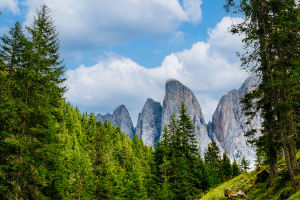Avoid These Mistakes
You've probably seen the photos: mist drifting over emerald peaks, ancient stone ruins perched high in the Andes. But few travelers realize that a trip to Machu Picchu isn't as simple as buying a ticket and showing up.
Between confusing entry rules, transport logistics, and crowd overload, many people end up frustrated—and miss out on what should be the highlight of their Peru trip.
If you're planning to visit Machu Picchu, let's go beyond the brochures. Here's how to avoid common mistakes and experience the ruins in the way they were meant to be: in peace, with wonder, and without unnecessary stress.
Timing Isn't Everything—But It's Close
Let's start with when to go. The site is open year-round from 6:00 AM to 5:30 PM, but your experience can vary wildly based on timing.
1. Rainy Season (Nov–March):
Expect clouds, mist, and slippery steps. On the upside, the site is quieter and greener. Rain usually comes in bursts, not all day. If you don't mind getting a little wet, this is when you'll get solitude.
2. Dry Season (April–October):
It's peak time for a reason—clear skies, dramatic mountain views, and easier hiking. But it's also very crowded, especially from June to August. You'll need to book trains and entry tickets months in advance.
3. Best Time of Day:
Aim for early morning (6–8 AM) or late afternoon (after 2 PM). Midday tours crowd the ruins, and the magic fades with the noise.
Ticket Tiers: Choose the Right One
Machu Picchu now uses timed entry tickets, and visitors must choose one of several routes. Prices for foreign visitors range from $45–$65 USD.
1. Machu Picchu Circuit Only:
Good for general viewing of the ruins. Most travelers choose this.
2. Machu Picchu + Huayna Picchu:
Adds a steep 2-hour climb for aerial views. Limited to 200 people/day. Book at least 2–3 months ahead.
3. Machu Picchu + Mountain Route:
Higher, longer, and less crowded than Huayna Picchu. Great for serious hikers.
Tip: If you want that famous photo from the upper terraces, make sure your circuit includes access to the Guardian's House viewpoint—not all do!
Getting There Isn't Straightforward
Machu Picchu has no road access—you'll need to piece together a few steps. Here's the most common way:
1. Train from Cusco (or Ollantaytambo) to Aguas Calientes:
PeruRail or Inca Rail offer scenic trains that take 1.5–3.5 hours. Prices range from $60–$180 USD roundtrip, depending on class and timing. Trains often sell out, so book in advance.
2. Shuttle Bus to Ruins:
From Aguas Calientes, take a 30-minute shuttle to the entrance. Buses run from 5:30 AM to 3:30 PM and cost about $24 USD roundtrip.
3. Hiking Options:
If you're adventurous, consider the Inca Trail (4 days) or the Salkantay Trek (5 days). Permits for the Inca Trail sell out up to 6 months in advance and cost $500–$700 USD, including guide and meals.
Hidden Pitfalls Most People Don't Expect
Even savvy travelers fall into these traps:
1. Arriving Too Late
The last bus up to the ruins leaves at 3:30 PM. If your train is delayed or you arrive too late in Aguas Calientes, you won't make it up.
2. Skipping Acclimatization
Cusco sits at 11,000 feet. Many visitors feel lightheaded or nauseous the first day. Stay in Cusco or the Sacred Valley for 1–2 days before going to Machu Picchu to let your body adjust.
3. Ignoring Entry Time Rules
You must enter within an hour of your ticket's time slot. Arrive too early or too late, and you may be denied entry—even with a valid ticket.
4. No Re-entry
Once you exit the ruins, you can't go back in. Use the bathrooms beforehand (there are none inside!), and pack snacks and water.
Expert Advice: Don't Rush the Magic
Andean historian Dr. Giuliana Borea notes:
"Machu Picchu is not just a postcard—it's a living heritage site. Rushing through it without context misses the point."
To make the most of your visit:
• Hire a certified local guide (around $20–$40 USD per group). They'll help you understand how the Incas aligned temples with the sun, and how the architecture remains earthquake-proof.
• Pause often. Sit on a quiet ledge. Listen to the wind. You'll feel what words can't explain.
Let's be honest—this isn't the easiest trip to plan. But once you stand there, looking down on the sacred city through the clouds, it all makes sense. It's not just about the view—it's the journey, the altitude, the early wake-up call, the way the stones seem to hum with memory.
Have you been to Machu Picchu, or are you still dreaming of it? What's the one thing you'd want to do or feel when you finally get there? Let's talk about how we'd make that moment count.
-
 Italy's Alpine JewelCelebs Can't Stop Flocking to Italy's Alpine Jewel—Here's Why!
Italy's Alpine JewelCelebs Can't Stop Flocking to Italy's Alpine Jewel—Here's Why! -
 Emotional Declutter TipsFeeling Overwhelmed at Work? Here's How I Learned to Let Go of Stress and Clear My Mind—Without Quitting My Job!
Emotional Declutter TipsFeeling Overwhelmed at Work? Here's How I Learned to Let Go of Stress and Clear My Mind—Without Quitting My Job! -
 Overthinking at NightCan't Fall Asleep Because Your Mind Won’t Shut Off? Here’s What Actually Helped Me Stop Overthinking at Bedtime 💤
Overthinking at NightCan't Fall Asleep Because Your Mind Won’t Shut Off? Here’s What Actually Helped Me Stop Overthinking at Bedtime 💤
Copyright © zogu 2021 - 2025. All Right Reserved.